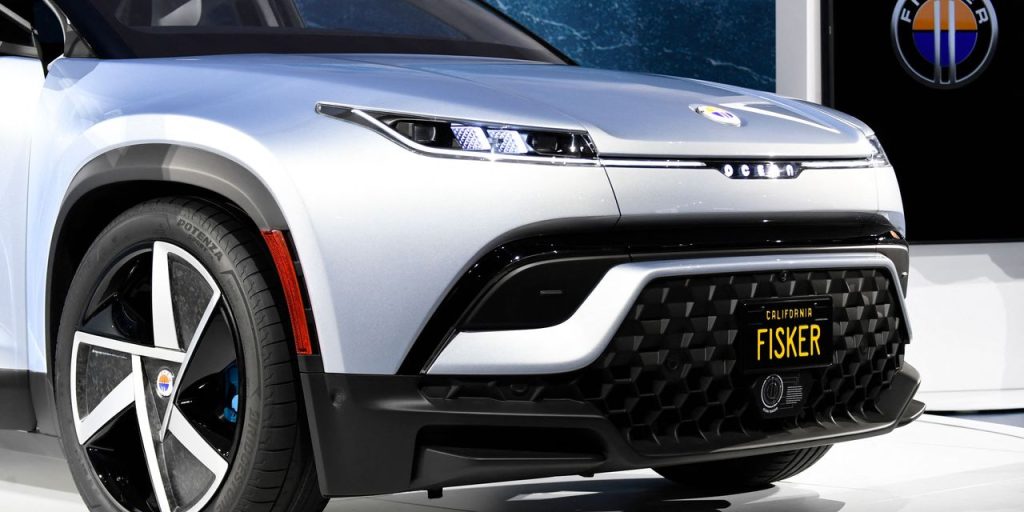The electric-vehicle start-up
Fisker
delivered a flurry of disappointing news on Tuesday, sending the stock lower.
Tesla,
and the challenge of navigating regulatory approvals in Europe, are partly to blame.
For the first quarter, Fisker (ticker: FSR) announced a loss of 38 cents a share from sales of less than $one million. Wall Street was looking for a loss of 31 cents a share and about $5 million in sales, according to FactSet.
More important, the company said it expects to produce 1,400 to 1,700 vehicles in the second quarter and 32,000 to 36,000 for all of 2023. The full-year number was down from the 42,000 to 43,000 units the company expected to produce in February.
“We [were] late to get homologation,” CEO Henrik Fisker told Barron’s, referring to the process of getting a car approved for sale with local regulators. That meant the company started European production later than it had intended, leaving a shortfall in annual output, but the CEO says Fisker is still on track to make 6,000 SUVs a month by year end.
Deliveries of the vehicles to consumers began on May 5. Fisker (ticker: FSR) completed its final approvals with European regulators in April, allowing the company to start production and sales of its Ocean SUV. Sales in the U.S. are planned for June.
Investors are reacting to the cut in the full-year production forecast with some nervousness. Shares were down more than 13% in early trading Tuesday, while the S&P 500 and
Nasdaq Composite
were down 0.5% and 0.6%, respectively.
Going from less than 2,000 vehicles in a quarter to almost 20,000 by the end of the year is aggressive, but Fisker is confident it can do it because of its production partnership.
Don’t forget that the company doesn’t own its own manufacturing capacity.
Magna International
(MGA), which has been assembling cars for decades, is building the car at its facility in Austria. Fisker pays for the much of the tooling used to make parts.
Investors might also be concerned that reservations for Fisker EVs sit at about 70,000, flat with the level three months ago. “The whole market has taken somewhat of a beating because of Tesla’s aggressive price reductions,” added the CEO. “Probably we have seen a lot of people who are holding out…get a
Tesla
simply because they couldn’t resist a good bargain.”
Fisker hasn’t changed pricing on its Ocean SUV. It was able to do that partly because it wasn’t producing cars. Battery costs, which drove some price increases for other EV makers, have fallen from peak levels set late in 2022.
Another area of focus for investors is the company’s second vehicle, the PEAR, which Fisker is building with
Hon Hai Precision Industry
(2317. Taiwan), better known as Foxconn.
The PEAR is slated for sale in early 2025. That’s a few months later than planned for and is partly a function of the new EV tax credits in the U.S. Fisker needs to source and build batteries and battery packs in the U.S. to access the tax credit.
Using partners to build vehicles has kept the cash Fisker needs to fund operations below peers such as
Lucid
(LCID), which built and owns its manufacturing facility in Arizona. Wall Street expects Fisker to use about $325 million in 2023.
Lucid
is expected to use about $3.1 billion in 2023.
That cash-use figure might go higher. Fisker still expects to spend between $535 million and $610 million in 2023 running its business, but less production also means less sales revenue to offset that amount.
Fisker ended the quarter with about $650 million in cash on its books. Another $70 million is coming in due to receivables lined to value added tax and equity issued using Fisker’s $350 million at-the-market equity program.
Coming into Tuesday trading, Fisker stock had declined about 34% over the past 12 months. Shares of Lucid were down about 58% over the same span.
General Motors
(GM) shares have fallen roughly 15%, while the S&P 500 has traded about flat.
Rising interest rates, high car prices, a slowing economy, and more EV competition have hit shares of most car makers and EV start-ups.
Write to Al Root at [email protected]
Read the full article here
